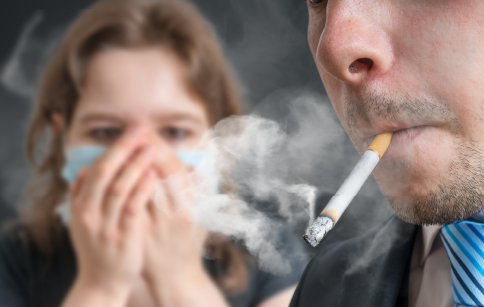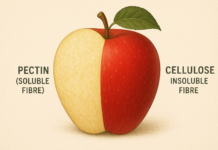Dr Said Qabbaah, Medical Writer & Public Health Expert
Most people are aware of the health risks of smoking for smokers, but few realise that secondhand smoke can be just as harmful to non-smokers. Also known as passive smoking or environmental tobacco smoke, it poses a serious health threat to those who do not smoke.
Despite increased awareness of the dangers of smoking, many people remain exposed to secondhand smoke in many places, including homes, workplaces and public areas.
Its harmful effects extend far beyond irritation from the smell of smoke, as it is known to contain over 7,000 chemicals, with some linked to cancer.
This month, let’s explore the hidden risks of secondhand smoke, highlighting its impact on various aspects of health and the dangers it poses to non-smokers.
What Is Secondhand Smoke?
Secondhand smoke is smoke exhaled by a smoker (mainstream smoke) and the smoke that comes from the burning end of a cigarette or any other tobacco product (sidestream smoke).
Sidestream smoke is particularly harmful because it contains higher concentrations of toxins than mainstream smoke. Also, it consists of smaller particles that can more easily penetrate the lungs and enter the bloodstream.
Even short-term exposure can have immediate harmful effects, making it a significant concern for public health.
Targeted Industry Tactics
Another major concern is the growing popularity of vapes or e-cigarettes among young people, with around 9% of the population in Jordan using them.
These products are often promoted as safer alternatives to smoking, but in reality, many still contain nicotine and other harmful substances that can lead to addiction and long-term health issues.
Their sweet flavours and sleek packaging make them especially appealing to youth. That’s why this year’s World No Tobacco Day is also focusing on the urgent need to protect young people from these targeted industry tactics.
Health Risks
The risks of secondhand smoke are many and can be categorised based on the body systems they directly impact
Respiratory disease: Secondhand smoke is a major contributor to respiratory illnesses in both adults and children. When non-smokers inhale it, they breathe in irritants that can cause or worsen certain respiratory conditions, such as:
Asthma
Chronic obstructive pulmonary disease (COPD) – a long-term lung disease that includes chronic bronchitis and emphysema
Pneumonia
Cardiovascular disease: Evidence shows that non-smokers exposed to secondhand smoke are 25% to 30% more likely to develop cardiovascular disease compared to those not exposed.
Additionally, people with pre-existing health conditions, such as diabetes or high blood pressure, face even greater risks when exposed to secondhand smoke, which can worsen their condition and lead to possible health complications
The toxins in secondhand smoke can lead to
Damage to the lining of blood vessels, leading to hardening of the arteries
Increased blood pressure and heart rate, putting extra strain on the heart
Higher risk of blood clots, increasing the likelihood of heart attacks and strokes
Cancer: One of the most serious risks of secondhand smoke is its direct link to cancer. Cancer-causing chemicals found in secondhand smoke can cause the cells to divide abnormally, leading to uncontrolled growth and tumour formation.
There is no safe level of exposure, however, long-term exposure significantly increases the chances of developing smoking-related cancers.
The most common associated type of cancer is lung cancer, as well as cancer of the throat, voice box (larynx), bladder, breast and nasal sinuses, among others
Pregnant women: Pregnant women who are exposed to secondhand smoke face serious health risks, both for themselves and their unborn babies, by causing:
Low birth weight
Premature birth
Sudden Infant Death Syndrome (SIDS), which is the unexpected and unexplained death of a healthy baby, typically under one year old, usually occurring during sleep
Effects on children: Children are especially vulnerable to the dangers of secondhand smoke due to their developing lungs and immune systems, by increasing the risk of
Frequent respiratory infections, such as colds, bronchitis, and pneumonia
Middle ear infections, that can potentially lead to hearing problems
Slower lung development that can result in reduced lung function and long-term respiratory issues
Protecting Yourself and Others
Enforcing a smoke-free home and car policy: One of the best ways to protect your family is to establish a strict no-smoking rule inside your home and car. Opening windows or using fans does NOT eliminate exposure to secondhand smoke
Offering support: Encouraging smokers to quit benefits both their health and the health of those around them. This can take place through a number of ways, such as smoking cessation programmes, nicotine replacement therapy, and counselling, to help them break the habit
Advocating for better health: Help to raise awareness about the hidden risks of secondhand smoke by sharing valuable information to promote a healthier, smoke-free culture.
Secondhand smoke affects more than just your comfort — it also harms your health, as it does for millions worldwide. While smoking bans and public health initiatives have made progress in reducing exposure, much more work is needed to eliminate this preventable risk.
By promoting smoke-free environments, supporting smoking cessation and raising awareness, we can better protect ourselves and future generations from the harmful effects of smoking and the often-overlooked dangers of secondhand smoke.






